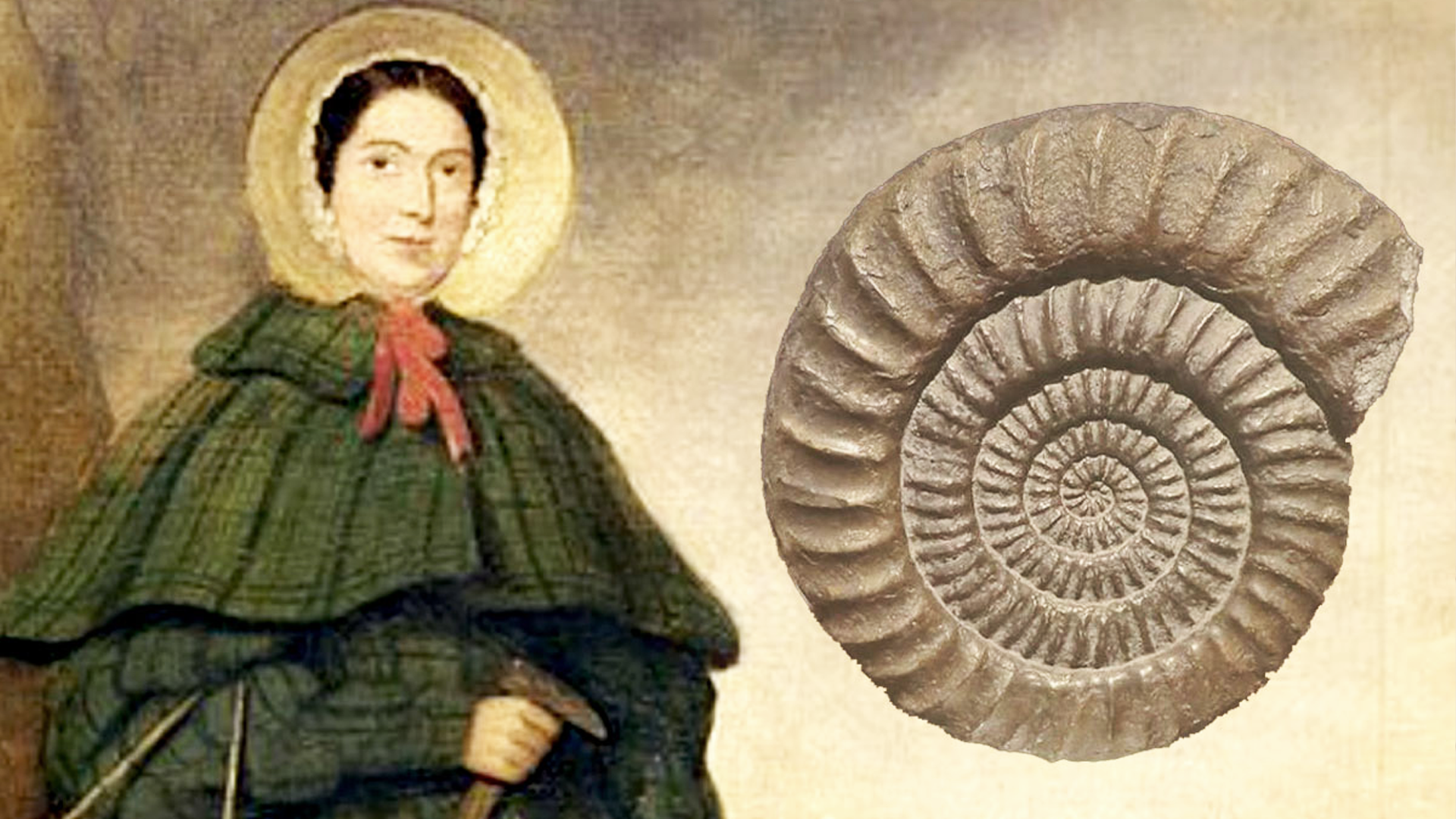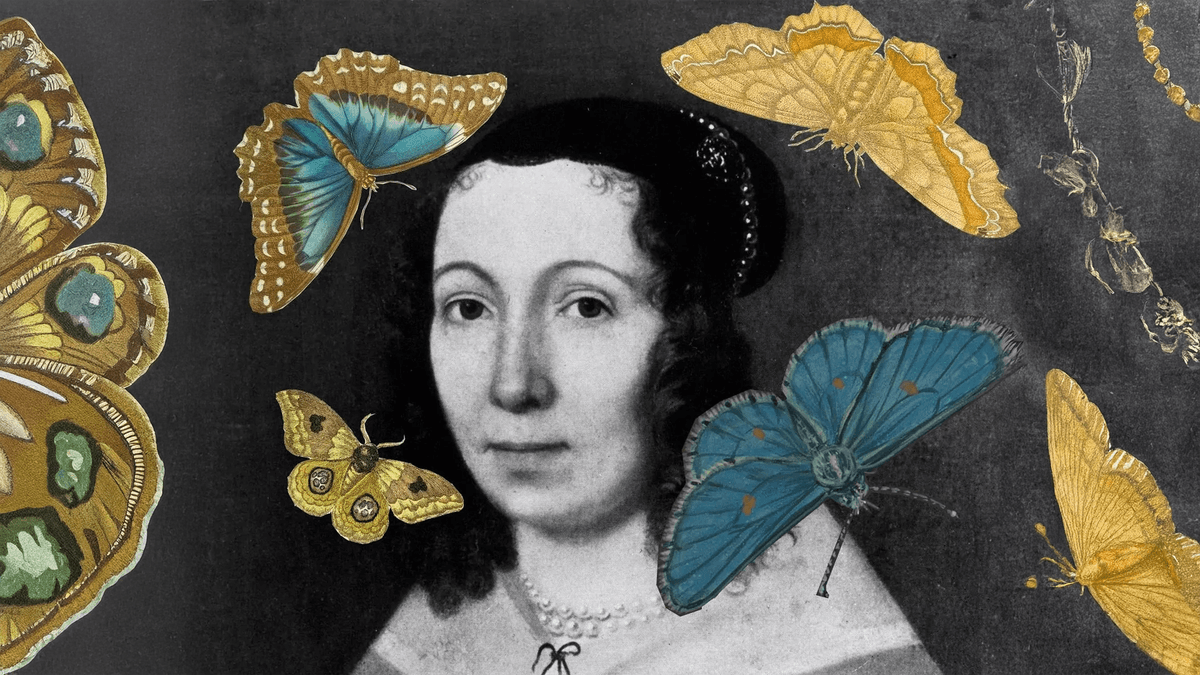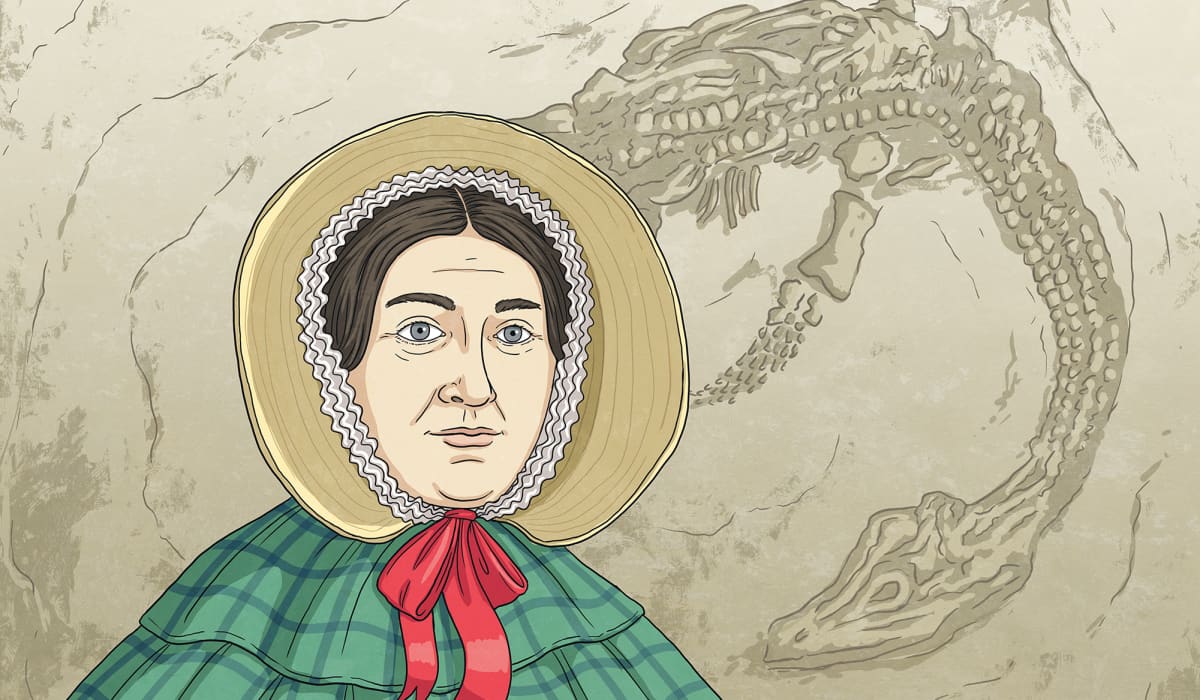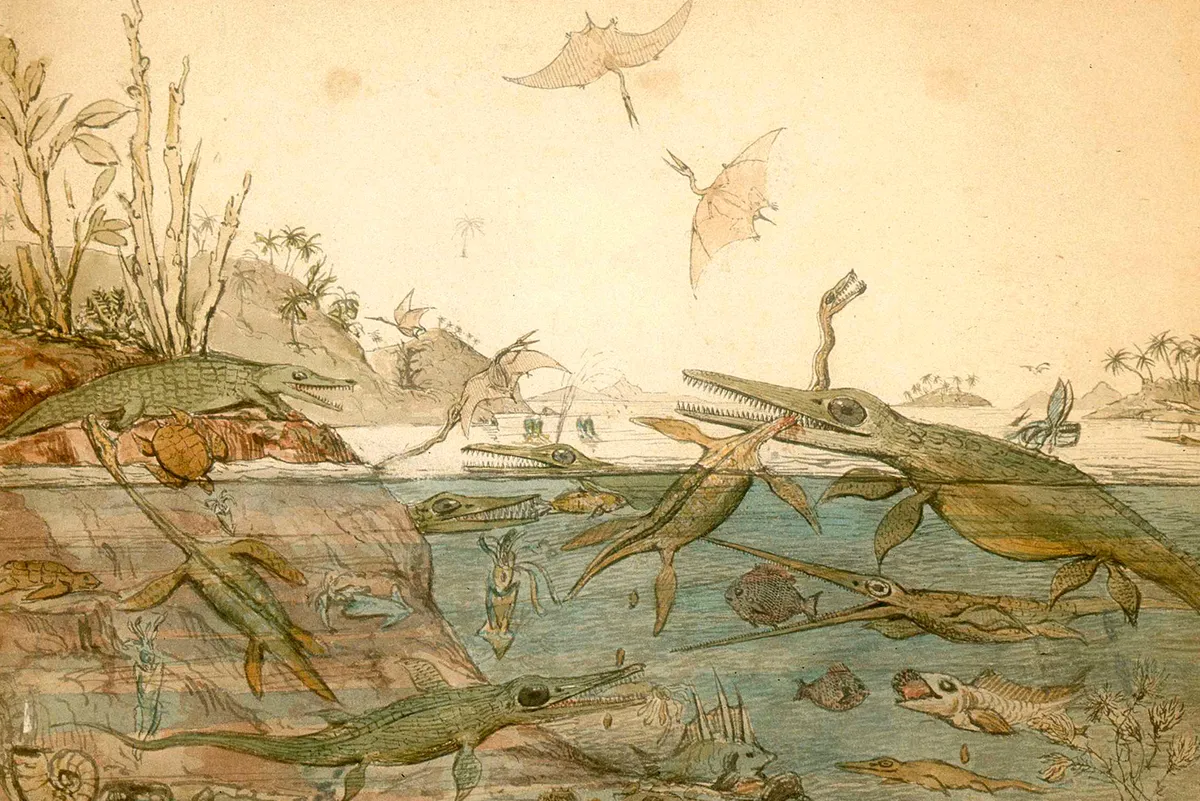Mary Anning

Mary Anning never had a university degree, wealthy sponsors, or even recognition in her lifetime—but her curiosity cracked open Earth's ancient story.
Biography
Mary Anning was born in 1799 in the seaside town of Lyme Regis, England, today known as part of the Jurassic Coast. She came from a poor family, one of ten children, and only she and her brother Joseph survived into adulthood. As a child, she joined her father on fossil-hunting trips along the crumbling cliffs, searching for what were then called 'curiosities' to sell to tourists. When her father died in 1810, twelve-year-old Mary continued the dangerous work of fossil hunting to help her family survive.
In 1811, Mary and Joseph discovered something extraordinary, a huge fossilized skull embedded in the cliffs. Over months of painstaking digging, Mary uncovered the rest of the skeleton, more than 17 feet long. Scientists first thought it was a crocodile, but it turned out to be something far older and stranger: an Ichthyosaurus, or 'fish lizard,' a marine reptile that lived nearly 200 million years ago. Mary had unearthed one of the first complete skeletons of an extinct animal, helping to prove that entire species could vanish from the Earth.
She didn’t stop there. In 1823, Mary discovered another mysterious creature, the first complete Plesiosaurus. With its long neck and paddle-like limbs, it looked so unlike anything known that even famous scientists like Georges Cuvier thought it must be a hoax. But after examining the evidence, they were forced to admit that Mary was right. Once again, a young woman without formal education had overturned scientific assumptions about the natural world.
Mary also found the first British example of a Pterosaur, a flying reptile later called a Pterodactyl, and even discovered fossilized poop, known as coprolites. By studying these coprolites, she figured out what ancient animals had eaten, showing that fossils were more than curiosities, they were clues to reconstruct prehistoric ecosystems.
Despite her unmatched knowledge of geology and anatomy, Mary faced constant barriers because of her gender and class. She was not allowed to join the Geological Society of London, and male scientists often published her findings under their own names. Yet her shop in Lyme Regis became a destination for geologists and collectors across Europe. She taught herself scientific illustration and worked with leading researchers, even as she struggled to make ends meet.
Mary’s discoveries fueled the early science of paleontology, before the word 'dinosaur' even existed. Her fossils filled museum halls and inspired a cultural fascination with prehistoric life. She transformed fossil hunting from a seaside hobby into a serious scientific field, one fossil at a time.
By the time of her death in 1847, Mary Anning had reshaped how humans understood Earth’s deep history. Though she received little credit during her lifetime, today she is recognized as one of the most important scientists of the 19th century, a self-taught pioneer who helped prove that our planet is far older and stranger than anyone had imagined.
Mary Anning’s life rewrote the story of science itself. She proved that knowledge isn’t owned by universities or elites, it’s built by anyone willing to ask the right questions and get their hands dirty searching for answers. Her discoveries forced scientists to accept that the Earth had once been home to creatures long extinct, shaking the foundations of religion, philosophy, and science. In a time when women were rarely allowed to publish or teach, she mastered geology, anatomy, and illustration through sheer determination. Her story isn’t just about fossils, it’s about persistence, curiosity, and the courage to uncover truths that challenge what people believe. Mary Anning reminds us that even without wealth or privilege, one person’s curiosity can change how the whole world sees itself.
?
Why was Mary Anning’s discovery of the Ichthyosaurus so important for science?
How did Mary’s social class and gender affect how her work was received?
What can fossils tell us about how life on Earth has changed over time?
Why was studying coprolites (fossilized dung) a breakthrough for understanding prehistoric life?
In what ways did Mary Anning inspire future generations of scientists and artists?
Dig Deeper
A short film about how Mary Anning’s fossil discoveries changed scientific thinking around the world.
Learn about Mary Anning, one of England’s most important contributors to the field of paleontology.
Discover more

Marie Curie
Marie Curie discovered polonium and radium, defined the field of radioactivity, and used her knowledge to treat wounded soldiers on the frontlines of World War I.

Charles Darwin
Charles Darwin revolutionized biology by developing the theory of evolution through natural selection, reshaping how we understand life on Earth.

Maria Sibylla Merian
Pioneering naturalist-artist who documented insect metamorphosis and plant–insect relationships with scientific accuracy, laying early foundations for ecology.
Further Reading
Stay curious!

